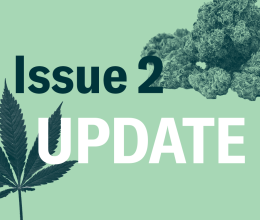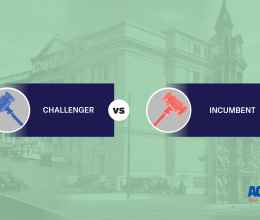Wednesday, September the 13th, marks the second execution to take its place in the State of Ohio following a three year rupture after Governor John Kasich launched a moratorium on executions, subsequent to the torturous effects of the lethal concoction of midazolam and hydromorphone used in the execution of Dennis McGuire on January 16th, 2014. McGuire‘s botched execution should be a caution to every state that takes on the role of ‘hangman’. and becomes responsible for inflicting unnecessary conditions surrounding the execution that violate the Eight Amendment. After all, McGuire’s execution was a clear sign of how inhumane and cruel capital punishment truly is.
Last weekend, I met with a best friend of mine who recently became a father, and we discussed the death penalty, having in mind the upcoming execution of Gary Otte. We discussed how he would feel if someone would harm his beloved son, just as Ronald Phillips, executed this year on July 26th, did to three-year-old Sheila Marie Evans in Akron, in 1993. The bestiality of killing in every instance, whether it be a three-year-old, a 61-year-old veteran, or a 45-year-old woman in Parma (the two victims of Gary Otte) bears no difference. Taking someone’s life is an act against humanity, but is a punishment in the same form “humane”? Why, despite our pride in scientific discoveries and technological advancements, have we not strayed from the ancient ‘tooth for a tooth’ idea of punishment? This also applies to the entire penitentiary system, which seems for a long time forgotten, that its foundation lies in resocialization, and not only punishment or unfortunately as it became – profiteering from punishment. The punishment without an attempt of rehabilitation and restorative justice does not align with our idea of a post-modern society.
The State of Ohio has the highest number of scheduled executions in the entire country.
Being sentenced to the death penalty is not a clear as it may seem. Circumstances matter, and not everything is black or white. This notion is seem through Harvard Law School’s recent examination of Ohio’s 26 death row prisoners that are schedule to die in the next five years. The report finds that out of 26 individuals, “two thirds of them suffer from serious childhood trauma and a quarter of them suffer today from severe mental and intellectual impairments.” The State of Ohio has the highest number of scheduled executions in entire country. When you combine the execution of inmates with serious mental and intellectual conditions, with malfunctioning lethal concoctions, does that not amount to the constitutional violation of the Eight Amendment: “no cruel and unusual punishments [shall be] inflicted.”? Does it mean that in Ohio we also put on death row the Bill of Rights?
There are countless other reasons why the death penalty is wrong; for one, the cost of sentencing and the maintenance of the death row prisoners in the United States exceeds the cost of life imprisonment. The European Court of Human Rights (ECHR) does not even allow extraditions of suspects to the United States whose trial may result in a capital punishment, as they believe the mere possibility of being put on death row is torture in and of itself. The only country in Europe who still executes people is Belarus.
The punishment without an attempt of rehabilitation and restorative justice does not align with our idea of a post-modern society.
Moreover, the recent case of Marcellus Williams from Missouri, poses even more limitations to the death penalty. As the new DNA evidences appear in the case, these proofs could not tie Williams to the murder of Felicia Gayle in 1998. As a result, Governor Eric Greitens issued a stay on the execution scheduled on August 22nd, 2017 and appointed a Gubernatorial Board of Inquiry to further consider Marcellus Williams’ request for executive clemency. Even more, in its August 7th, 2017, ruling, the Fayette Circuit Court in Kentucky stated that the death penalty is unconstitutional for people who were under 21-year-old when they committed the crime. This ruling was unsuccessfully evoked by the lawyers of Garry Otte as he committed the two murders at the age of 20. Additionally, Otte’s lawyers brought up their concern of using midazolam in the lethal concoction, but this was also struck down.
What Gary Otte (now 45)* did was heinous, and he did it twice, but, his background and youth cannot be left out of the conversation. Otte had a life full of mistreatment and continuous depression. If a child of 10 abuses drugs and alcohol, and at the age of 15 attempts suicide this child becomes a byproduct of a broken family, broken schooling, and a broken society. Like in the book of Richard Wright “Native Son,” this person is becoming ‘destined’ to wrongfulness. It is us who failed to stop these two murders when Otte indulged in intoxication in primary school, or when he tried to take his own life. The American toolkit does not have prevention mechanisms for situations like this, but it do has the death penalty, and uses it often. This is an alarming and unacceptable status quo of reality. One may call their conducts a crime, I would call it a result of our common failure. Therefore, before some will rejoice that the death penalty is back and in full swing in Ohio, let us look for Gary Otte in our neighborhoods, schools, churches, and on our streets – let us hand them a hand, rather than taking their hand later to administer a lethal injection, for with every execution we do fail more as a society. The next execution of Alva Campbell Jr. is being scheduled for November 15th of this year. After that there will be 23 to follow…
*Gary Otte was sentenced to death for the February 12th, 1992, murder of Robert Wasikowski and the February 13th, 1992, murder of Sharon Kostura that both happened in Parma, OH.
Łukasz W. Niparko LL.M., is a Humanity In Action Fellow (HIA) at the ACLU of Ohio. He graduated from the European University Viadrina with a degree in international human rights and humanitarian law. Prior to coming to the ACLU, Łukasz has served with various NGOs such as The Association for Legal Intervention, The Helsinki Foundation for Human Rights, and Polish Humanitarian Action.









